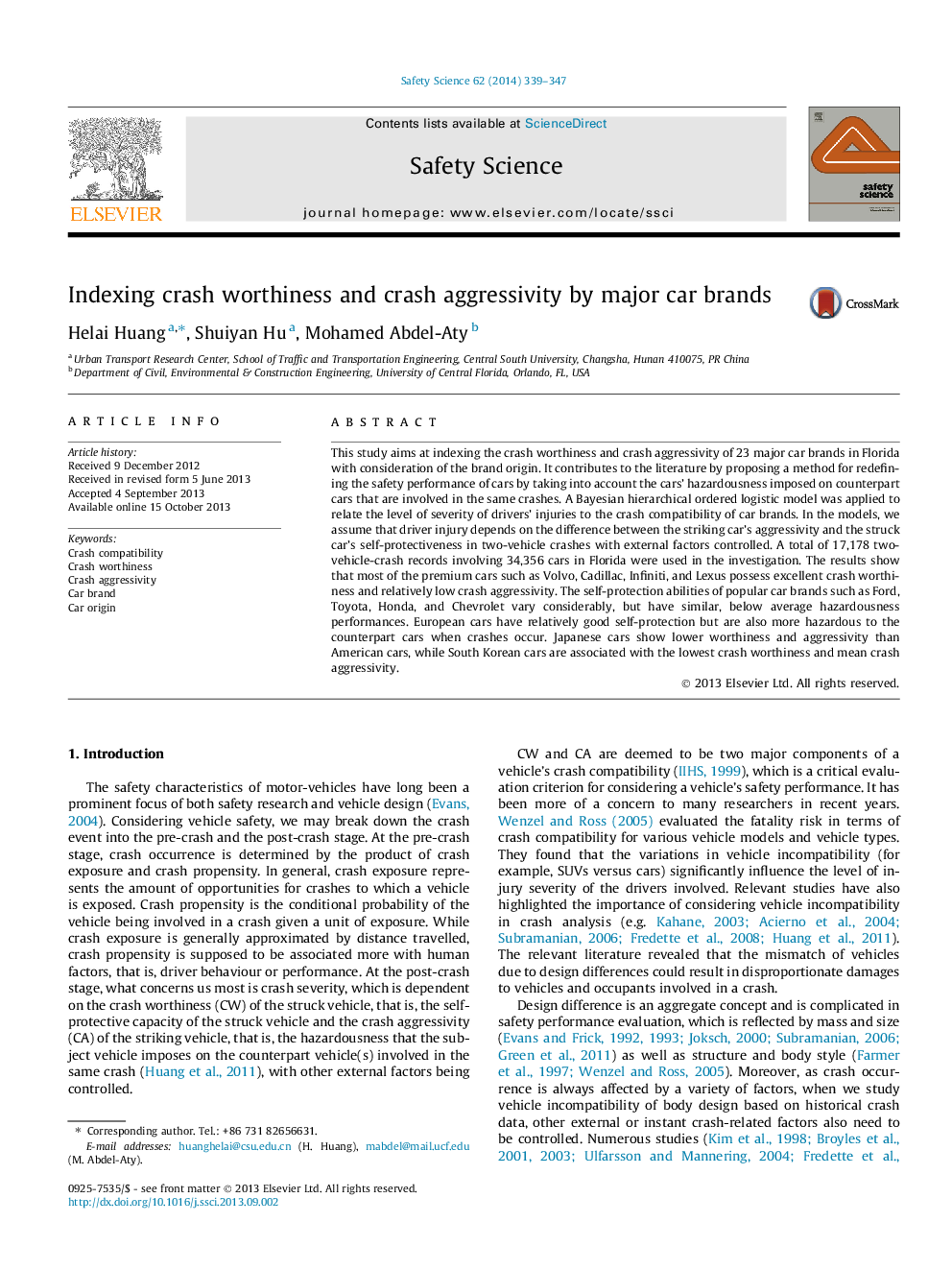| Article ID | Journal | Published Year | Pages | File Type |
|---|---|---|---|---|
| 589238 | Safety Science | 2014 | 9 Pages |
•Evaluate crashworthiness and crash aggressivity for 23 major car brands.•Develop a Bayesian hierarchical ordered logistic model.•Driver injury depends on vehicles’ crashworthiness and aggressivity.•Most luxury car brands show better crashworthiness and lower crash aggressivity.•Popular car brands have below average crash aggressivity.
This study aims at indexing the crash worthiness and crash aggressivity of 23 major car brands in Florida with consideration of the brand origin. It contributes to the literature by proposing a method for redefining the safety performance of cars by taking into account the cars’ hazardousness imposed on counterpart cars that are involved in the same crashes. A Bayesian hierarchical ordered logistic model was applied to relate the level of severity of drivers’ injuries to the crash compatibility of car brands. In the models, we assume that driver injury depends on the difference between the striking car’s aggressivity and the struck car’s self-protectiveness in two-vehicle crashes with external factors controlled. A total of 17,178 two-vehicle-crash records involving 34,356 cars in Florida were used in the investigation. The results show that most of the premium cars such as Volvo, Cadillac, Infiniti, and Lexus possess excellent crash worthiness and relatively low crash aggressivity. The self-protection abilities of popular car brands such as Ford, Toyota, Honda, and Chevrolet vary considerably, but have similar, below average hazardousness performances. European cars have relatively good self-protection but are also more hazardous to the counterpart cars when crashes occur. Japanese cars show lower worthiness and aggressivity than American cars, while South Korean cars are associated with the lowest crash worthiness and mean crash aggressivity.
